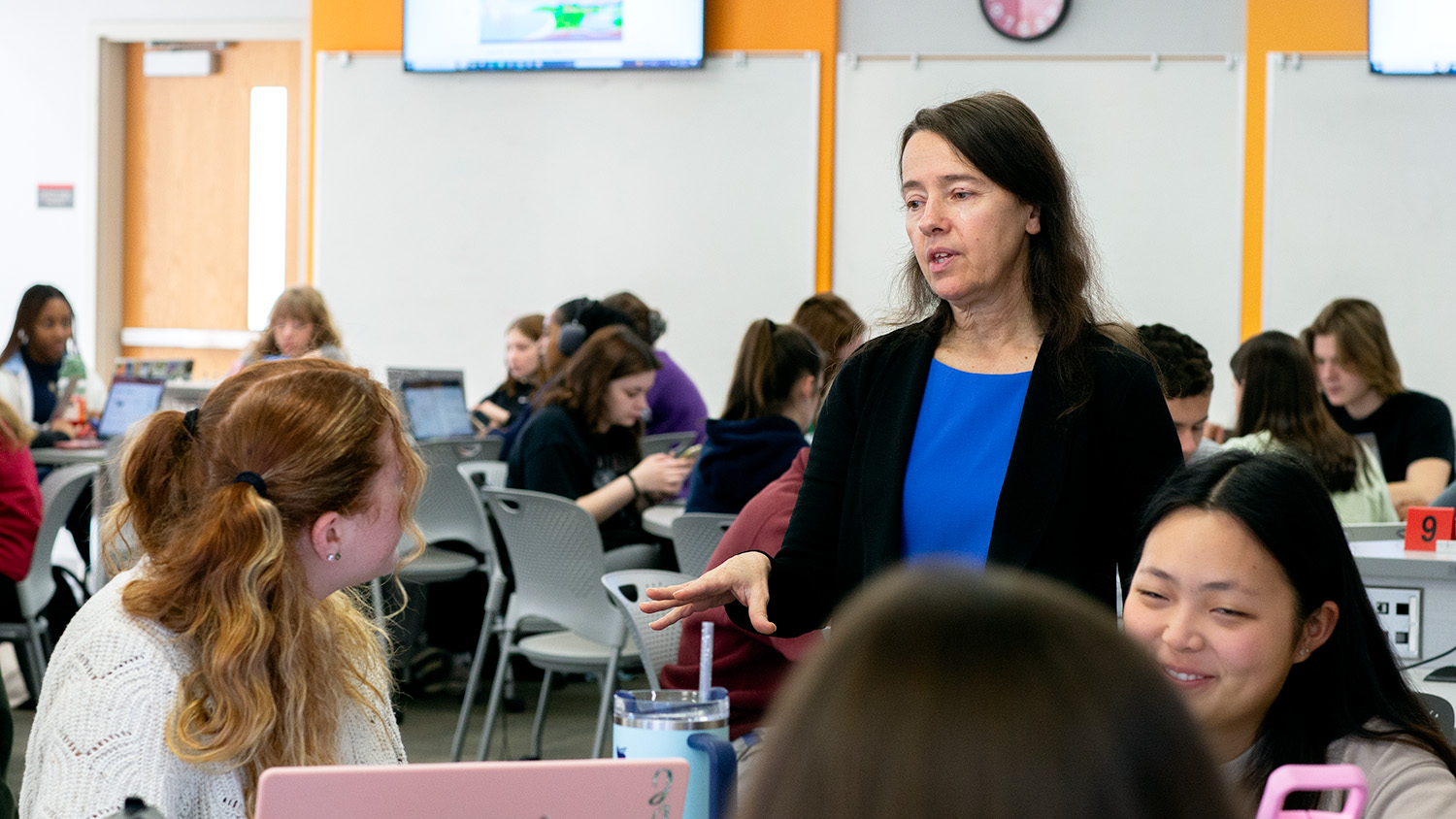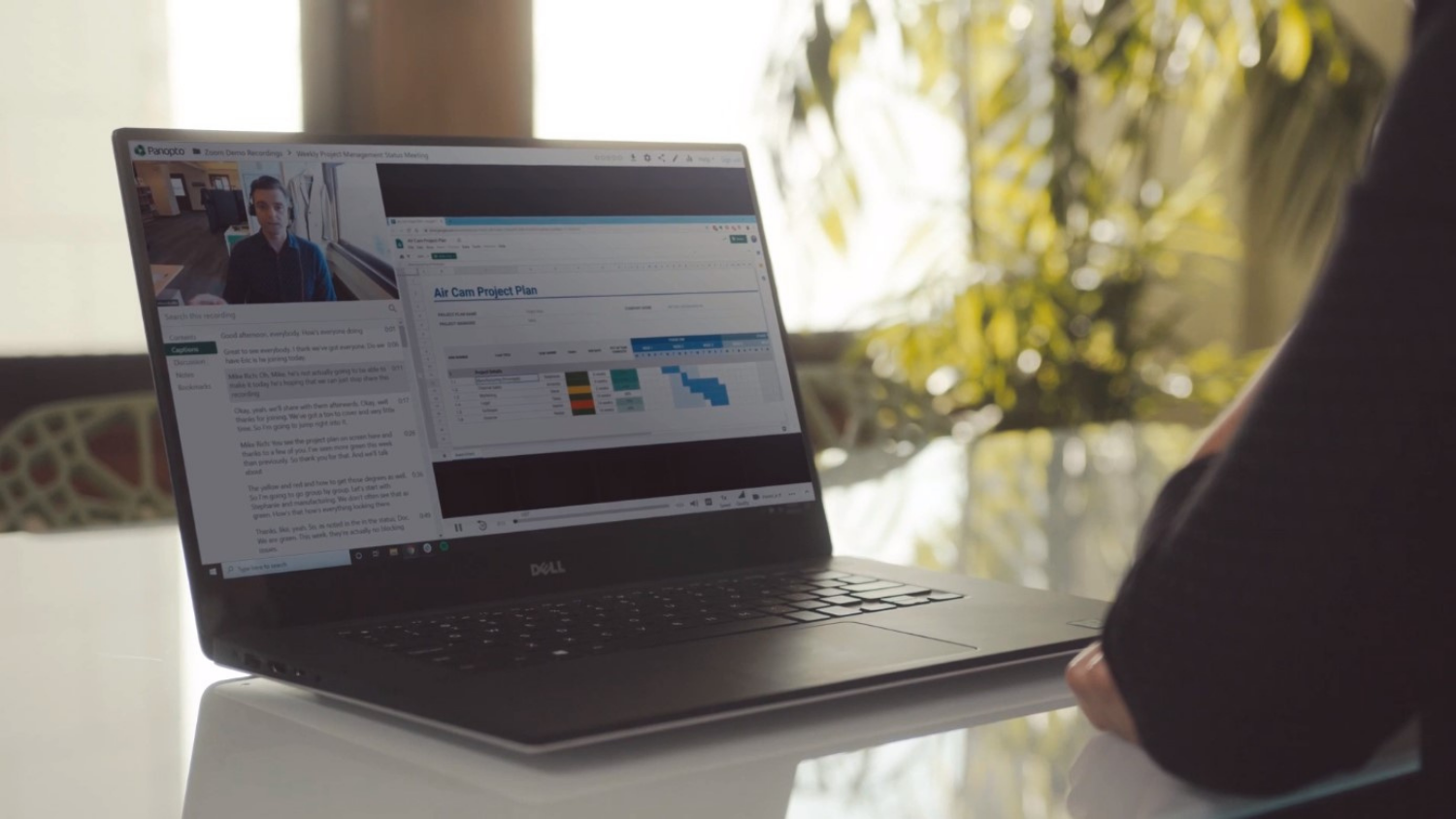Pandemic Pearls of Wisdom: Online Teaching Takeaways from the 2020-21 Academic Year

Like most universities, NC State is looking forward to the time in the near future when teaching during a worldwide pandemic is in the rearview mirror. Visible effects of the COVID-19 pandemic at NC State include the emptying of residence halls, the Brickyard, classrooms and offices. Less visible, but perhaps more impactful, has been the human impact on faculty, staff and students as we all adjusted to a life with limitations, stressors and perhaps grief we could not have imagined before now.
Yet it is not our nature to lose hope and resolve in troubling times. Even in the midst of this crisis, NC State drafted a strategic plan that states in Goal 1, “The success of our students is greatly dependent on high-quality and relevant teaching from our excellent faculty. We commit to empowering our faculty and advancing our pedagogy in ways that best serve our students, whether they are learning in person, online or both.”
So we asked some NC State faculty to reflect on their experiences over the past year, applying a “Think and Do” philosophy. What new pearls of wisdom will they carry forward in their teaching as we enter a “new normal” in the next academic year? What valuable lessons and skills did they learn, and how did their perspectives on teaching change? Check out their responses below!
Flexibility, Compassion and Personal Connection in Teaching
Many faculty discussed taking a more flexible approach to teaching during the pandemic and realized providing flexibility did not detract from the rigor of their courses. For example, Donna Petherbridge implemented “LifeFlex scheduling.” If a student needs an extension of up to a week, i.e. to “LifeFlex a due date,” they just let her know ahead of time. Mary Estrada also softened the tone of her syllabus around due dates — letting students know of the expectation and reason for it, but not being overly punitive about late work. Likewise, Carlos Goller frames all deadlines as “suggested deadlines” and requires no excuse for late work.
He found that “the students are able to do work they are proud of when they do it in a timeframe that allows them to devote the time necessary. Students are also less likely to completely give up on the course and ‘disappear’ after missing deadlines when they know that they still have the option to complete the work for full credit.”
Want to read more? See this related PackHacks article, and this article from the Chronicle of Higher Education.
Claire Gordy became even more committed to supporting students’ well-being during the pandemic and will continue this practice in the future. She began speaking openly and often about mental health in her genetics course. She created a Padlet (a kind of digital bulletin/discussion board) with a specific mental health-related question each week for anonymous discussion. She strives to normalize the idea that “it is okay not to be okay,” and to “create a class culture in which students are comfortable reaching out for help.”
Personal connections require more work and intention in an online environment. In his recent blog post in the Faculty Forum, Marion Martin wrote, “The challenge of helping students develop a sense of belonging has been heightened during the pandemic.” He goes on to describe connecting with students by playing jazz at the start of classes in Zoom: “Students continue to appreciate the tone that the music sets for class as being warm and welcoming. I’ve even had students come by office hours to specifically ask about music, which opens the door for us to discuss other interests.” Martin will continue being open about his life and interests to help students find him more approachable.
Alternative Assessment Strategies
At the very beginning of the COVID-19 crisis, Diane Chapman wrote a Faculty Forum blog post titled “Do you really need a proctored exam? An invitation to rethink assessment.” Quite a few faculty did rethink assessment and were pleased to find that a stressful high-stakes exam was not necessary to assess their students’ learning. Julianne Treme shared that “instead of exams, students completed infographics, policy proposals and participated in debates. Not only were these more fun to grade, it gave students an alternative method to demonstrate their knowledge” and decreased the likelihood of cheating. Goller replaced the high-stakes exams in his Biotechnology courses with individual and group projects. He and his students learned about and embraced open pedagogy and the co-creation of valuable educational resources, which gave new meaning and significance to the students’ work.
Estrada and Annette Moore kept their exams, but relieved student stress in other ways. Estrada made her midterm and final open-note and untimed, which students reported helped them engage with the material in a more meaningful way since they were less anxious. Moore started allowing students to use a 1-page reference sheet of their own creation when taking timed exams. She found that “students that created detailed reference sheets tended to score very well on the exams, generally better than those who gave little or no effort to creating the sheets.” While the detailed reference sheet itself was surely helpful, Moore theorizes that the creation of the sheet was a valuable learning exercise as well.
Digital Tools and Technologies
Several faculty were delighted to discover the value of digital tools while teaching during COVID and won’t abandon them when this crisis is over. Treme and Moore have both embraced the use of collaborative documents. Treme used Google Slides and Google Docs to allow students to contribute in class and receive real-time feedback from instructors and peers. She used Google Jamboard for real-time graphing exercises. Once she’s teaching in person again, Treme will continue to use these to open participation to all students in her large classes. Moore echoed Treme’s sentiments and found that “students are more likely to be engaged with in-class small group assignments as they know the rest of the class will see what they have produced.”
New ways of using discussion boards and the benefit of back-channel chats are two other discoveries faculty made while teaching online. Maria Gallardo-Williams started using discussion boards more intentionally and will continue this in the future: “Instead of expecting students to post or comment, we initiate threads that generate discussion. For example, we will post a hint for a homework question and will keep adding replies with hints as long as we have engagement.” Treme and Gallardo-Williams both found unexpected value from back channels for communication in Zoom. Both found that students asked more questions and replied to others’ questions in the Zoom chat and appreciated how this increased their engagement during class. Some technologies that can supply a backchannel in a physical classroom include Google Chat, Moodle Chat, and Zoom Chat (outside of a meeting).
Many faculty began regularly creating instructional videos and recording lectures as courses went online and report that students hope that recordings will be available once they are learning in person. Goller has been an early adopter of NC State’s new content capture tool, Panopto, which not only records, but also provides a platform for students to interact with the video and each other. Goller is excited to continue using Panopto to provide opportunities for learners to discuss and share knowledge before engaging in a case study or application of what they learned in person.
Two examples of using technology to provide greater access for students include online tutoring and a liquid syllabus. Gallardo-Williams saw an uptick in the use of tutoring in the Chemistry department once it went online, with students commenting favorably about how grateful they were that it was available to access so easily.
She notes, “I think we will need to keep the ability to offer online tutoring even if the courses move back to an in-person format.”
Estrada found that leveraging Google Sites to transform her syllabus from a simple document into a website made it easier to access for students who could view it before the Moodle course opened and view it on their mobile devices. She was inspired by Michele Pacansky-Brock’s video about a liquid syllabus.
Conclusion
What pearls of teaching wisdom have emerged for you over the past year? Have you consciously brought more compassion and flexibility into your classroom? Have you changed how you assess student learning? Do you have a new favorite digital tool that you’ll keep using? And, are you interested in engaging professional development to support your “high-quality and relevant teaching” as described in NC State’s draft strategic plan?
Please consider joining DELTA this summer as we offer workshops to support your teaching as you move into a new normal. Topics include digital tools and teaching strategies for online, hybrid and in person classes!
Read More
Want to read more about innovations that faculty across the country have found during the pandemic? Check out the EDUCAUSE article, Improved Student Engagement in Higher Education’s Next Normal, and from the Chronicle of Higher Education, After the Pandemic, What Innovations Are Worth Keeping? and More Pandemic-Driven Innovations Professors Like.


